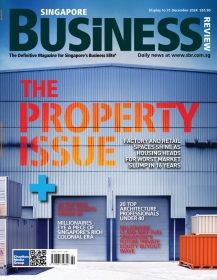
Debt Threat: S-REITs' credit quality could deteriorate amidst rising debt-funded investments
17 S-REITs took on over $5bn in debt since January last year.
In a latest report, credit rating agency Moody's warns that the credit quality of rated Singapore REITs (S-REITs) could come under pressure over the next 12-18 months as their leverage weakens on the back of debt-funded investments.
"We believe S-REITs will maintain an appetite for growth -- both in Singapore and overseas -- as they pursue yield-accretive acquisitions. Assuming further debt-funded acquisitions, leverage will weaken from already-high levels at 30 September 2016, signaling the trusts’ weakening capacity to weather potential asset value declines," it said.
Moody's believes that S-REITs' investments, including acquisition and asset enhancements, will be principally debt-funded because it is cheaper to borrow than to raise equity in the capital markets and S-REITs typically have limited cash balances available for investments.
Under Monetary Authority of Singapore’s (MAS) regulations, S-REITs are required to pay out at least 90% of taxable income as dividends.
It notes that since January 2015, the 17 S-REITs that it rates collectively took on more than SGD5 billion in debt, most of which was used to fund acquisitions and expansion plans.
Here's more from Moody's:
We assess leverage using two ratios: adjusted debt/total deposited assets and adjusted net debt/EBITDA. Average adjusted debt/total deposited assets for the rated S-REIT portfolio steadily climbed from 34% at end-2013 to 38% as of 30 September 2016 -- a level at which it now seems to be embedded. Average adjusted net debt/EBITDA also weakened to 7.8x from 7.0x over the same period.
The MAS caps S-REITs’ reported borrowings to 45% of their total assets, which is typically also set as maintenance covenants under the trust’s bank loans and senior unsecured notes. Given our expectation of rising leverage in FY2017, S-REITs’ headroom to absorb potential asset value declines and stay within the limit will narrow. As of 30 September 2016, S-REITs can weather a maximum 15%-20% asset devaluation, according to our calculations. While our base-case analysis does not assume a significant deterioration in asset values, we believe S-REITs with a more conservative capital structure will be better positioned to weather such headwinds.
























 Advertise
Advertise






